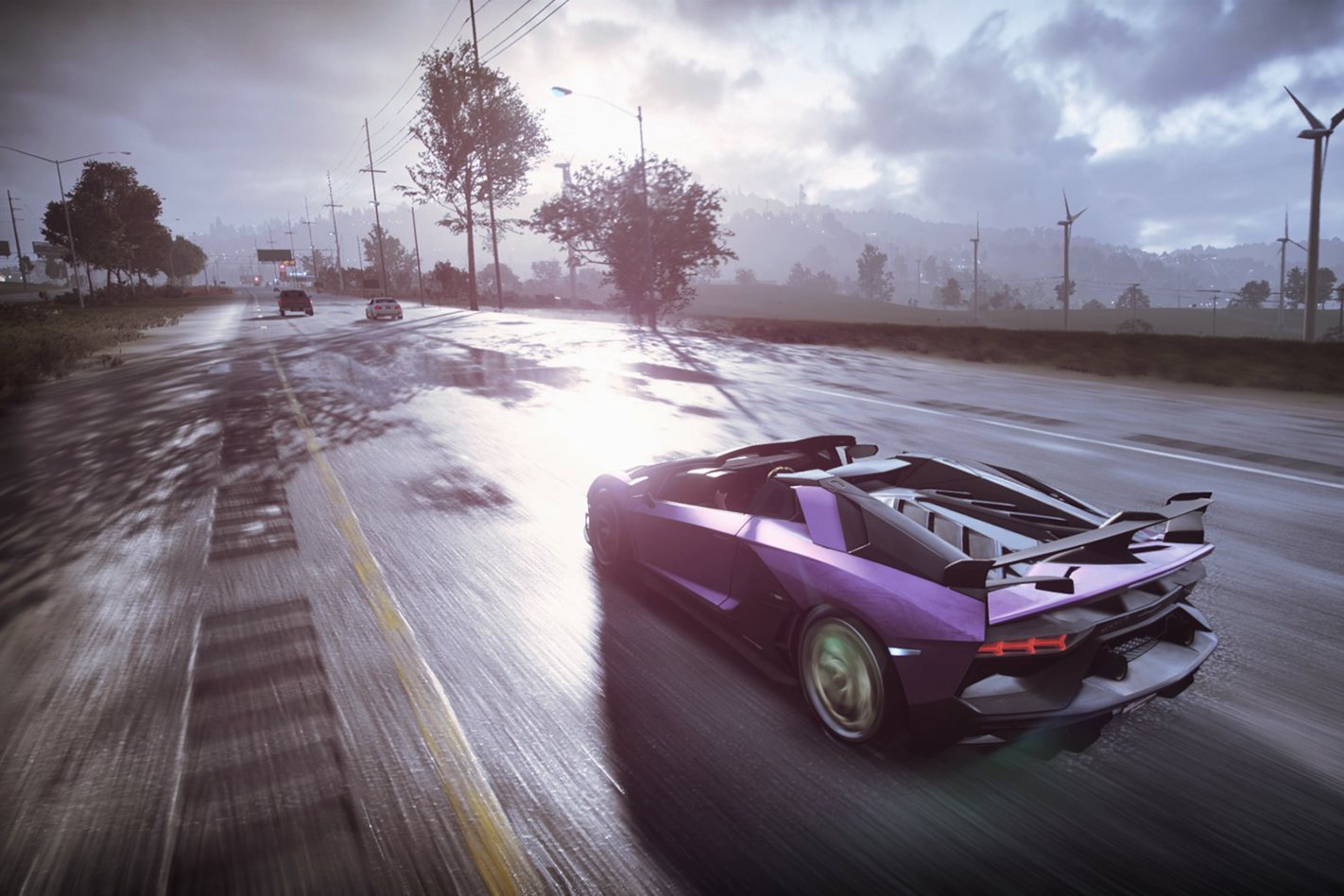
The Need for Speed franchise is something of a western cultural touchstone within the now-global modified car scene. Ask any late-millennial car enthusiast what their first exposure to the culture was and most, for better or worse, will cite either the Fast and the Furious film franchise, or 2004’s Need for Speed Underground 2.
And it’s the magic of Underground 2 that 2019’s Need for Speed: Heat attempts to recapture; as every NFS game has attempted to since the franchise’s “full reboot” with the self-titled release of 2015 – just with varying levels of Fast and the Furious laugh-ability.
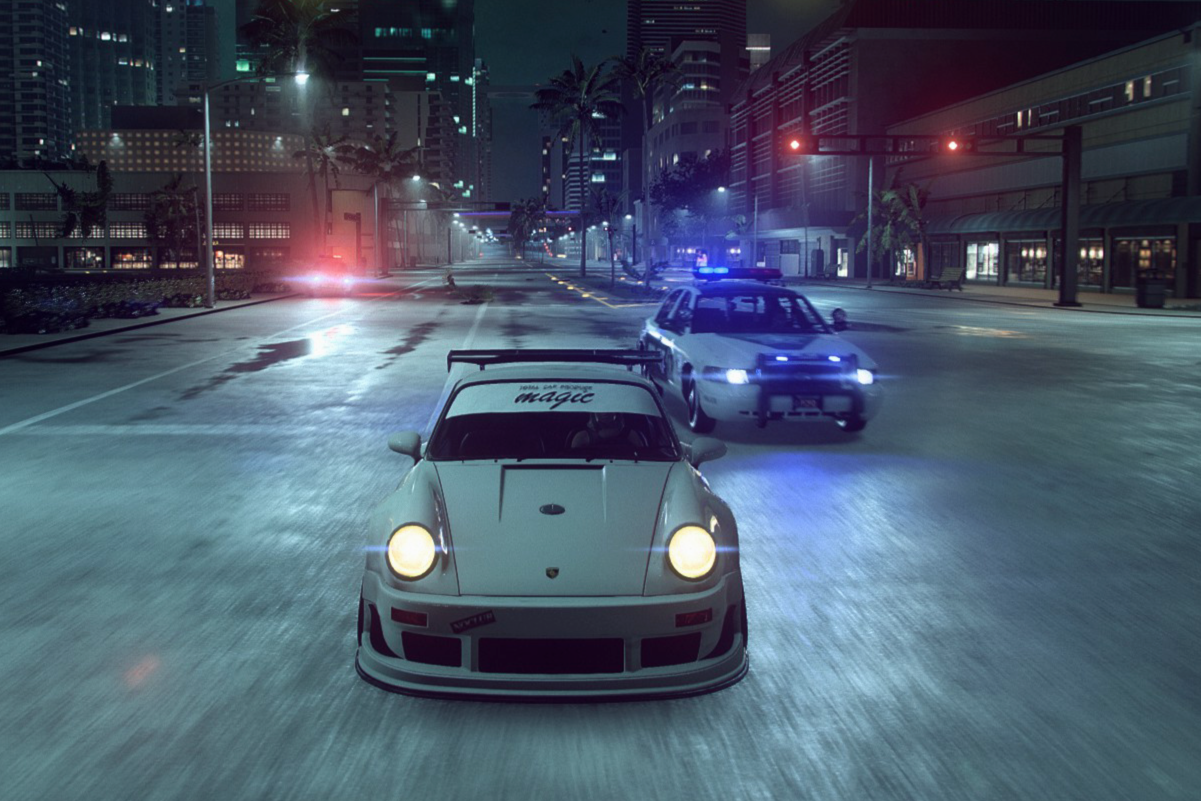
Is Heat worthy of its “triple A” status? Lacklustre graphics, an old car list, at-times infuriating gameplay and laughable plot and characters – point to no.
But does it have anything to offer the modified car enthusiast that’s actually old enough to hold a learner’s permit? We think it does.
What do you need for Need for Speed Heat?
Need for Speed Heat, developed by Ghost Games and published by Electronic Arts, requires one of the current Big Three: a Playstation 4, an Xbox One or a PC.
From launch Heat was strictly a gamepad-only proposition, however an update applied in late January 2020 enabled support for a range of Logitech and Thrustmaster gaming wheels – with other models also potentially being compatible.

How much does Need for Speed Heat cost?
Need for Speed Heat is listed on the Xbox and Playstation stores, and most of the big gaming stores for $99.95.
Though there are plenty of sales right now, so it might be a good time to buy. Xbox and Playstation digital download stores also offer a “Deluxe” bundle for $107.95 – or a base-game downloadable add-on for $7.95.
The Deluxe upgrade includes: a starter car, a starter vehicle wrap and three special pre-customised progression-unlocked cars – all designed by Internet car designer and visual artist: Khyzhl Saleem – as well as four exclusive character outfits, and a “REP” and “BANK” boost.
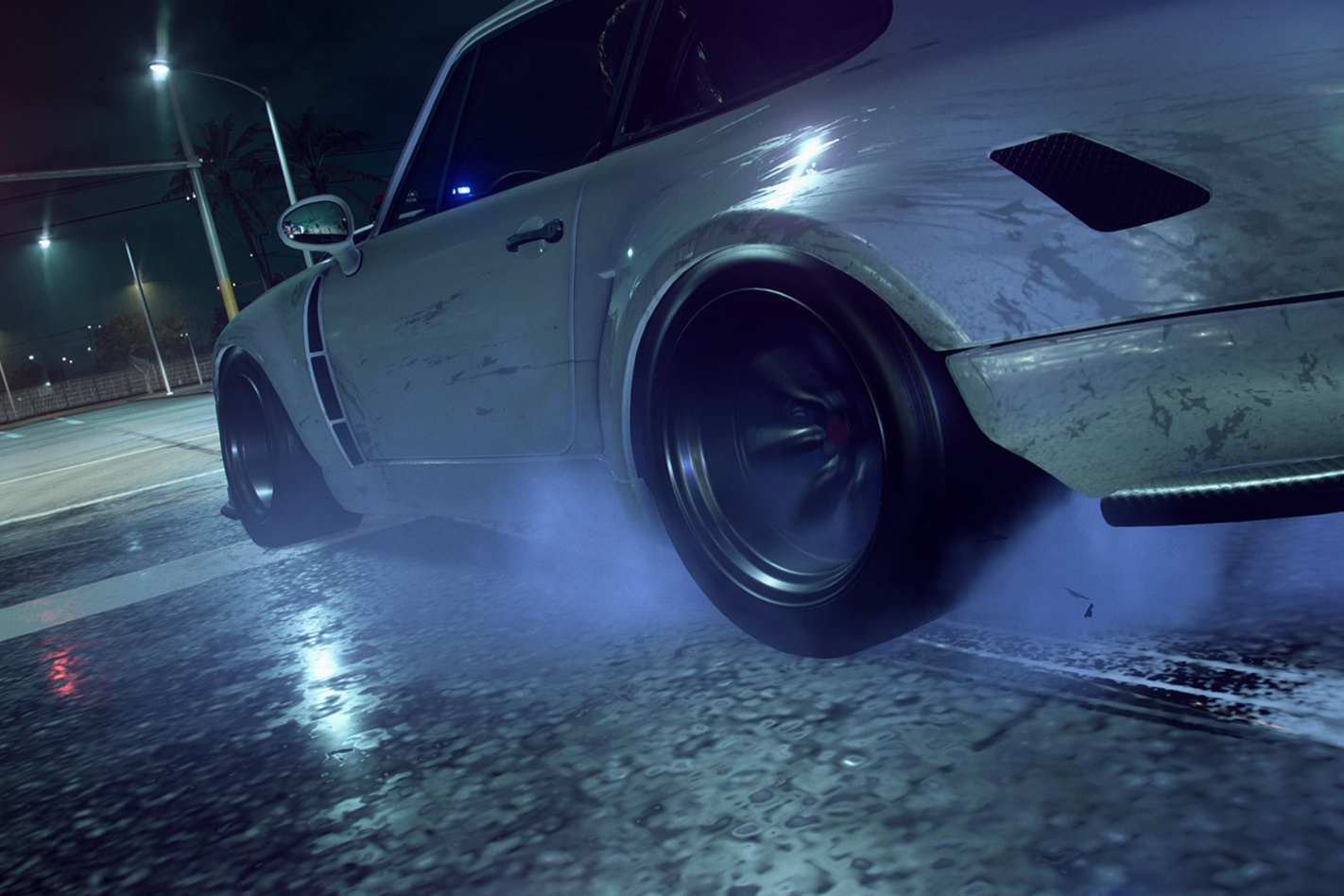
What’s it like to play Need for Speed Heat?
Playing Need for Speed Heat is a constant cost-benefit analysis that we really wish it weren’t.
For fans of modified cars, Need for Speed’s customisation system is a class-leading attraction, and should be the benchmark for every game which emphasises the player’s ability to make their virtual vehicles unique.
There are some new features that we haven’t seen before either. Besides the usual paint, wheels, bodykit, aero and vinyl options, Heat allows you to even customise the specific exhaust noise of your car – which also changes to faithfully mimic the engine that’s under the bonnet. Dropped a Mazda rotary into your E30 BMW? It’ll take on a brappy new persona that sounds very authentic.
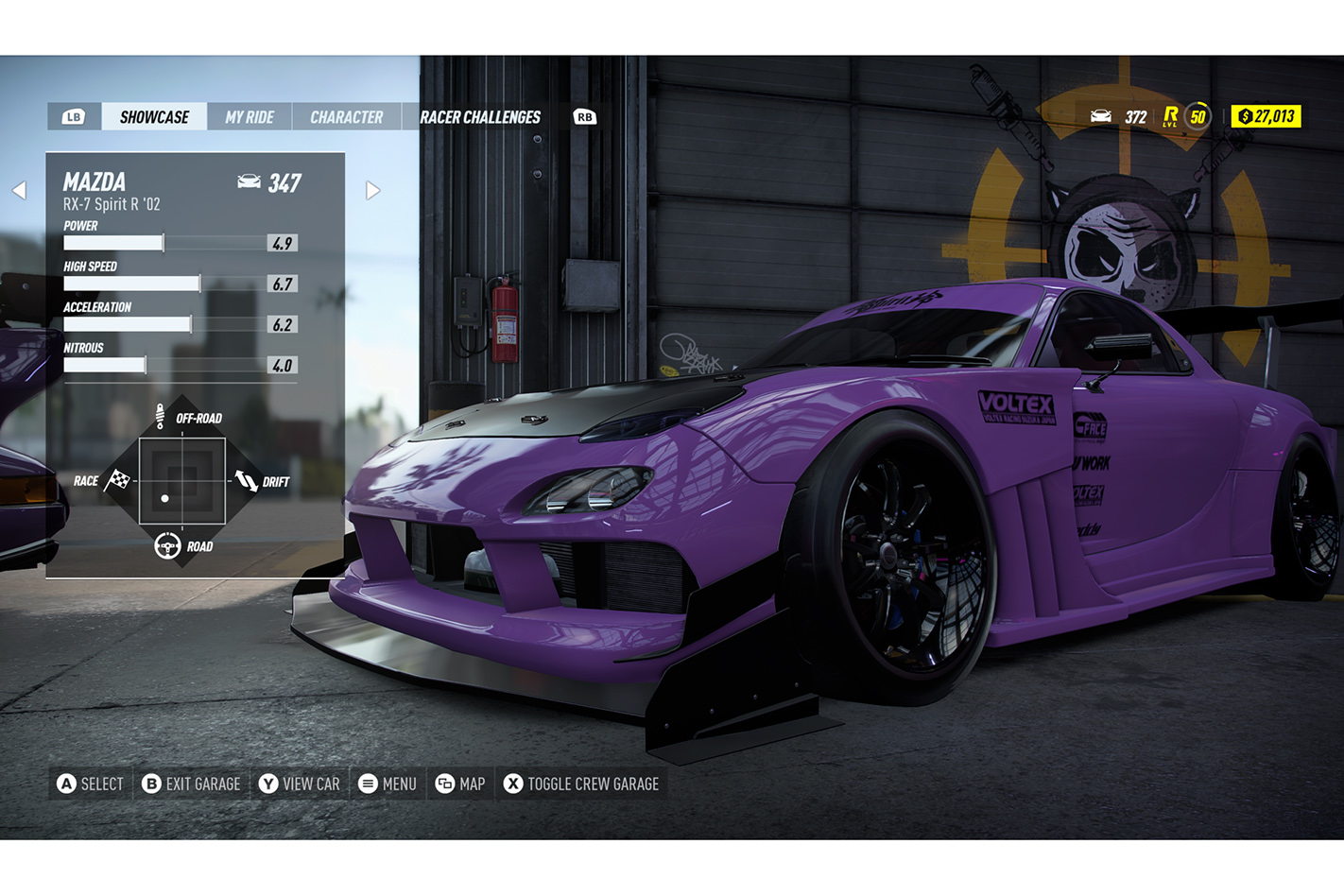
There’s also a companion phone app for Heat called NFS Studio which allows you to customise any vehicle in-game with the full menu of visual modification options, and is a surprisingly decent time-waster. However it actually serves a useful purpose, for once you acquire that vehicle in game you can then upload your customisations from your phone at the push of a button.
We have to admit, that’s pretty cool.
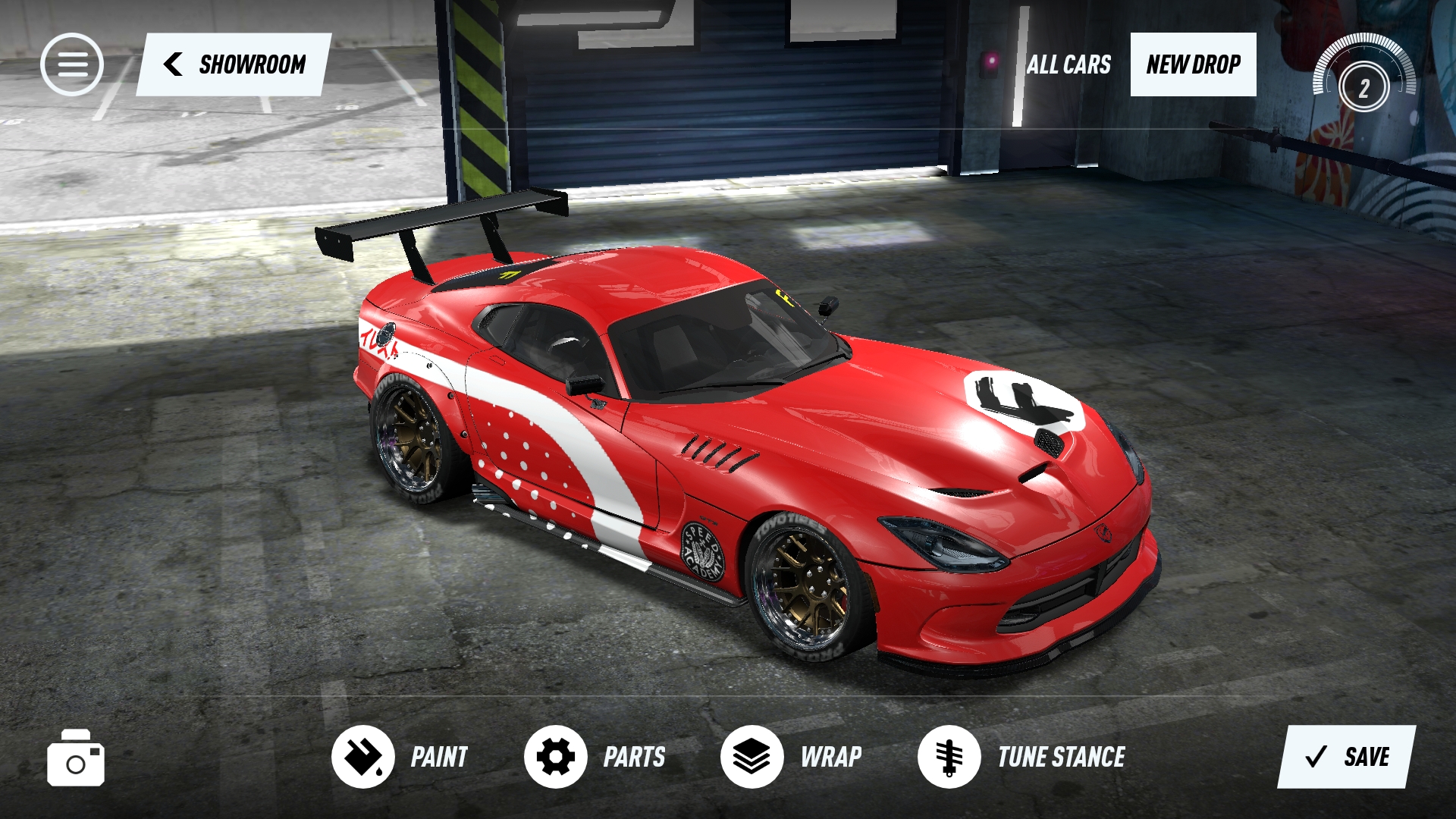
You can also change the outfit of your avatar via a large wardrobe of streetwear brands. It does nothing to the gameplay, but it does at least make cutscenes unique to each player. Speaking of which, gone are the cringy live-action cutscenes of Need for Speed, replaced instead by CG animations. That’s definitely a good thing, and we have to acknowledge that the dialogue and voice acting in Heat is rather respectable – even if the storyline is fairly rubbish.
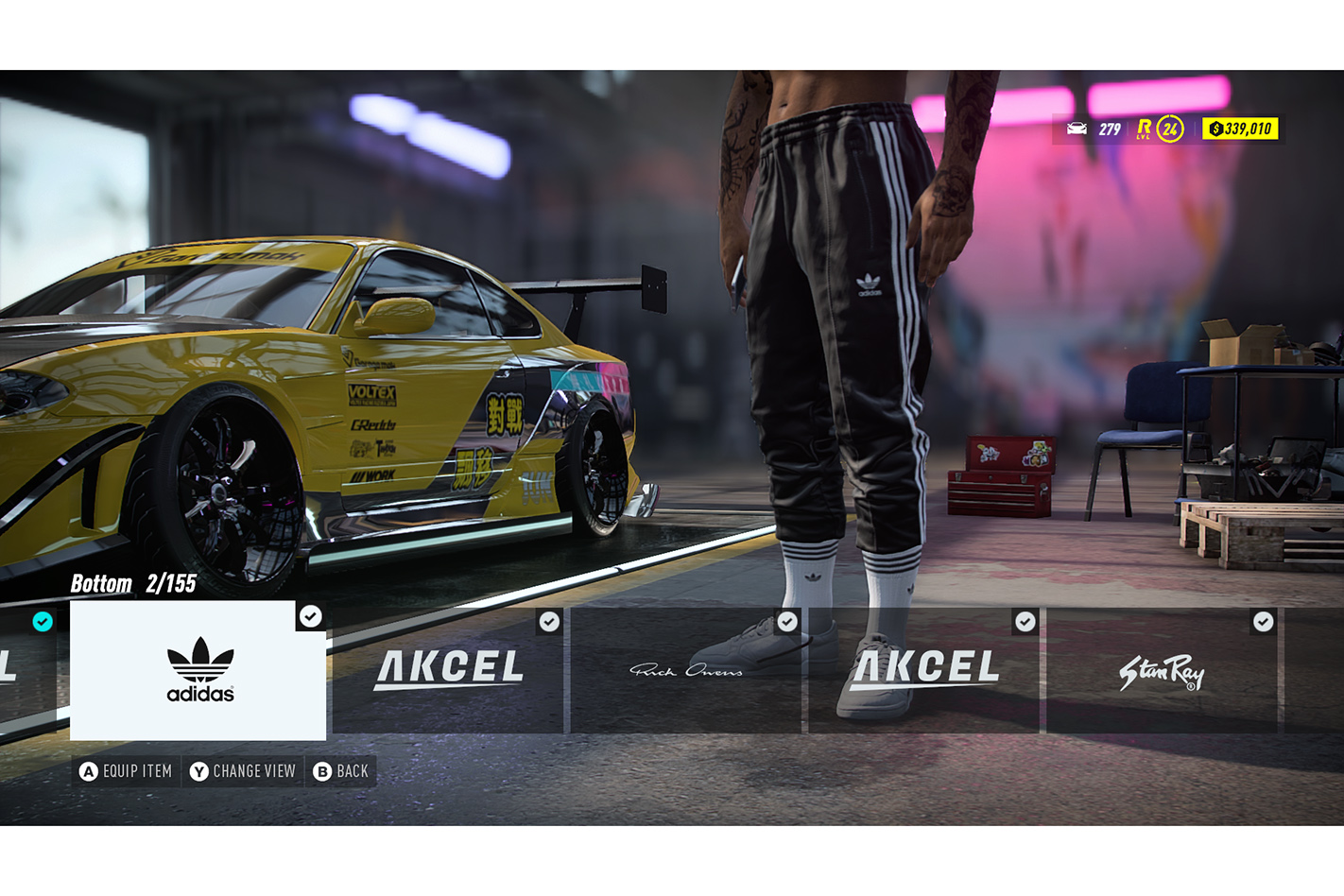
The thrill of personalising your vehicle encourages players to “risk it all” in night mode, where races and police chases earn you REP, which in turn unlocks new parts, new cars as well as most of the story’s progression.
Racing in day mode sees the player racing in sanctioned closed road races; and is where the player earns their BANK to buy cars and parts; or to lose at night if they get busted by the police.
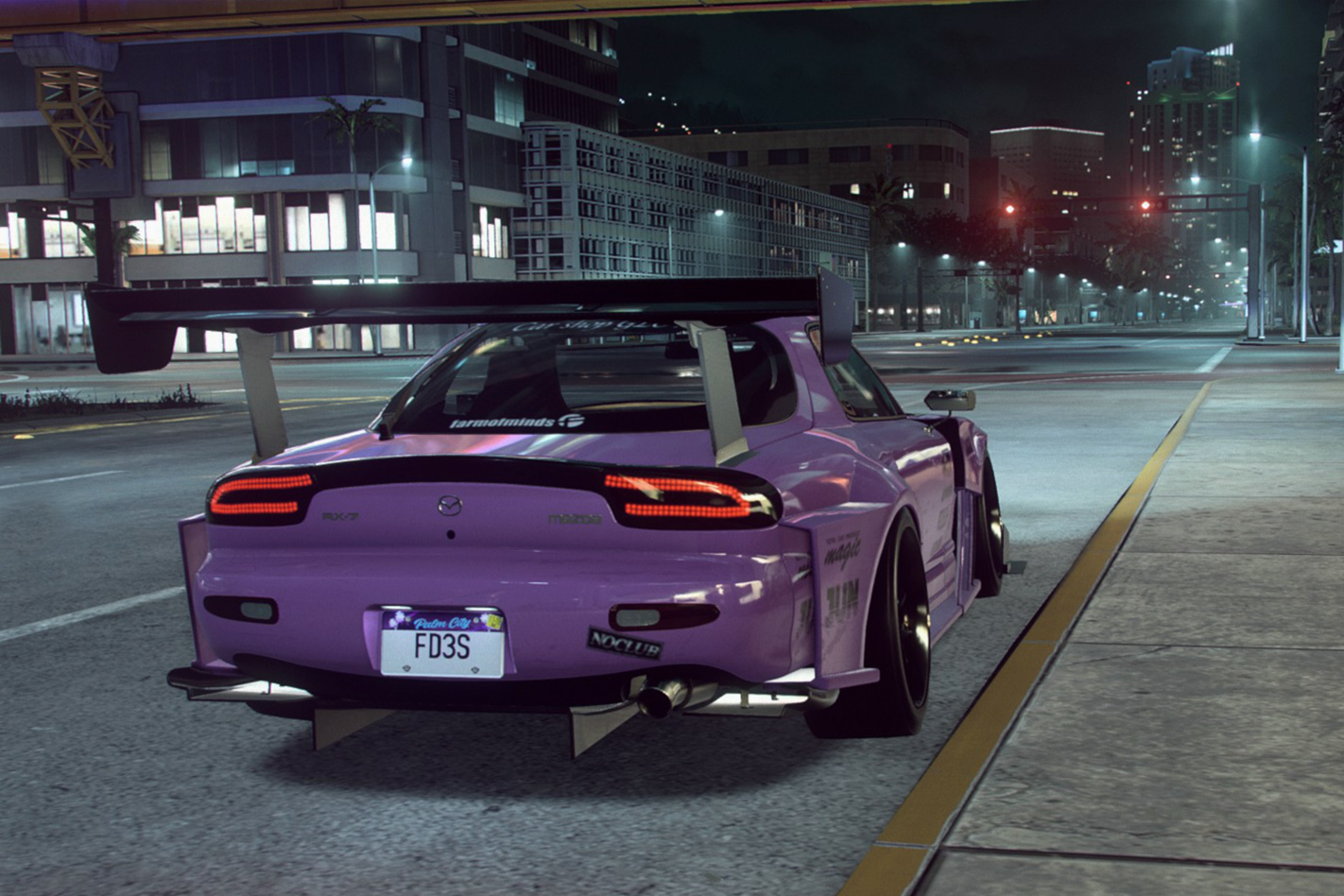
The risk element of night mode really delivers a tangible element of consequence, tension and excitement, as not making it back to your garage safely sees you lose most of the REP accumulated for that evening, as well as a fairly significant decrease in BANK. It’s a setback that can really curb your progress, especially in the early stages of the game.
But Police chases are once again incentivised in a way that evokes the magic of another fan-favourite, NFS: Most Wanted of 2005. At night Cops will pursue you if your ‘heat’ level rises above zero, which it does as soon as you finish a race. Chases get progressively crazier the higher up your heat level gets, but the payoff there is that your heat level is also REP multiplier – survive the night with a heat level of four, and you’re quadrupled your takings. You’ll quickly cotton on that running the risk of big, potentially car-destroying police chases is worth it purely because it fast-tracks your progress massively.
Day and Night mode feed into each other well, and produce a cohesive and stimulating experience that truly does deliver the element of “risk” which the game emphasises.

However, driving physics and gameplay mechanics remain arguably the biggest critique of the contemporary Need for Speed franchise, and 2019’s Heat is no different.
Despite the pre-launch promise of improved physics and refinement beyond the rudimentary “brake-to-drift” feel of racing; unfortunately little has changed. There’s currently no steering wheel support either, so you’re forced to stick it out with the controller.
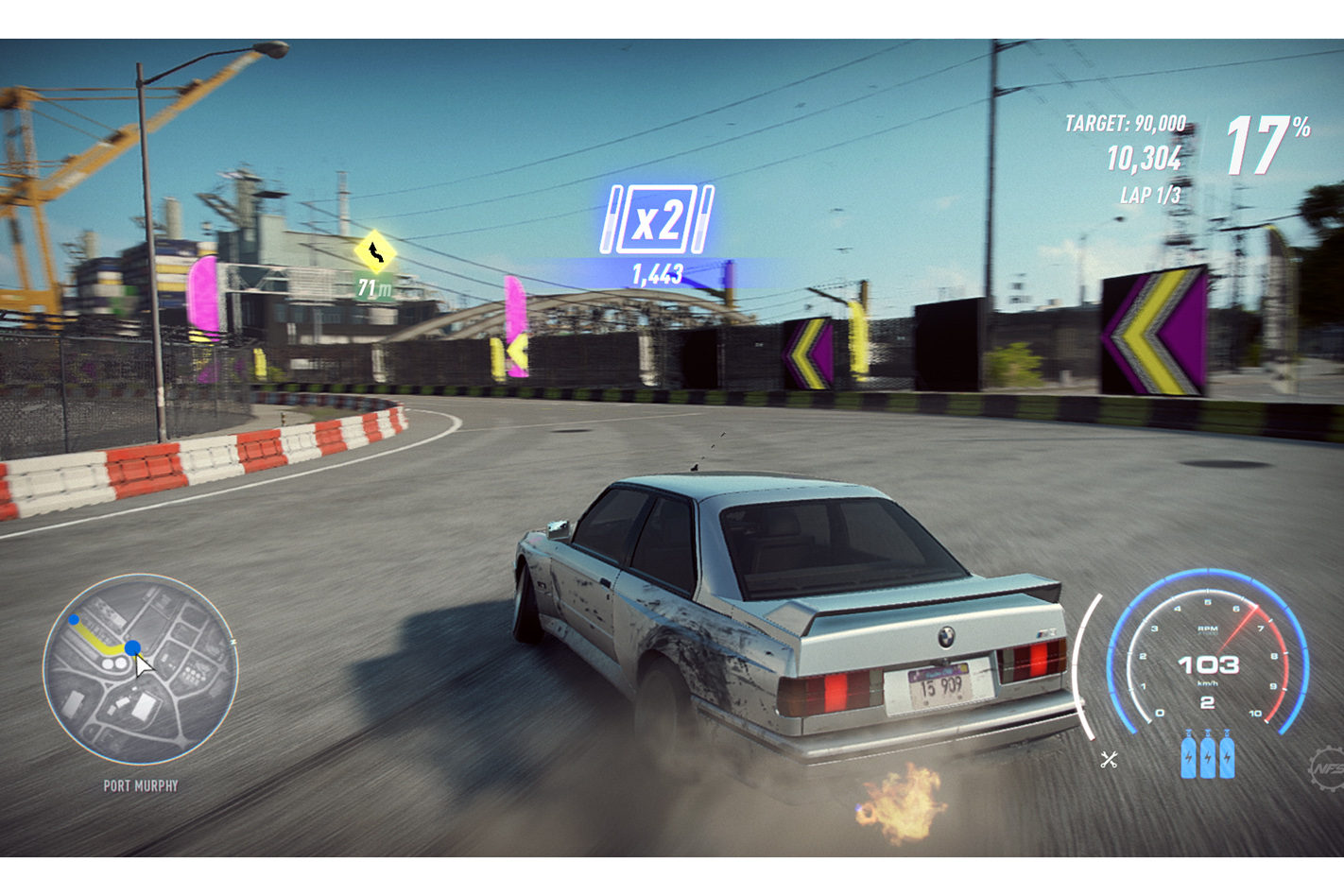
Virtually all cars are frustratingly coded to snap oversteer with the tap of a brake or accelerator (though at least you can choose which button initiates the drift in “Live Tuning” by tapping right on the D-pad). If you pride yourself in your mid-corner throttle control, you’ll likely find yourself quickly frustrated at unwanted powerslides and oversteer situations.
There’s a workaround though – either select a front-wheel drive car, all of which have their insta-drift physics turned way down, or tune your car as far toward the ‘grip’ side of the performance meter. It’ll basically never slide, which also feels ultra-unrealistic, but at least you won’t need to endure random drifts when you least want them.

Players like us who are usually enjoy more realistic and ‘simulator’-like racing games, will struggle when first entering Palm City. You really have to forget everything you know about realistic braking points and apexes.
And it’s not like embracing the drift mode works well either. You can tune your car’s handling to be as drifty as possible, but that just results in a car that understeers relentlessly until the back steps out. Meanwhile the middle ground between grip and drift is just varying shades of dynamic disappointment.
NFS Heat gameplay almost railroads you into simply pinning the car towards a corner at full speed, and stabbing the handbrake to spectacularly (and laughably) slide around the corner. Once you figure that method out, winning races becomes a brainless exercise, and thus routine and disengaging.
Similarly, police chases in night mode, which can be unforgiving and difficult at early stages of the game, become remarkably easy and exploitable once you attain a vehicle with a bit of pace and begin to notice the patterns and limits of the police AI.
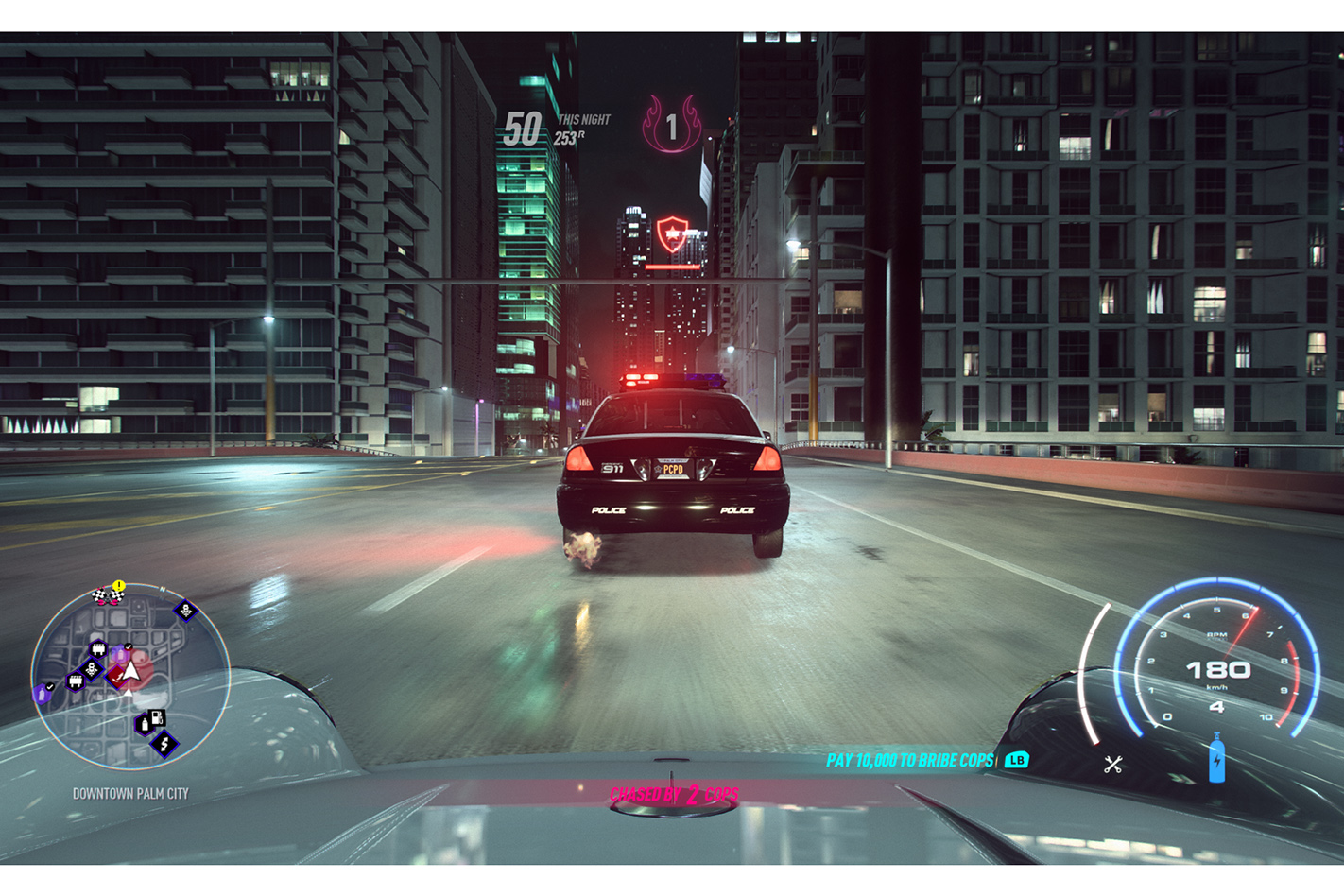
Are there any downsides to Need for Speed Heat?
Yes, and while it’s ultimately a fun game – the player is challenged and asked to forgive a lot.
Besides the poor vehicle controls, physics and driving mechanics; we found the graphics to be rather lacklustre for what should be a ‘Triple A” release on the current generation of hardware.
There’s also a fairly common and repeatable bug, which sees you clip through the water and stuck off the map in free roam; and if you’re in night mode where fast travel is disabled you might be forced into restarting your game.
If you stick with the game beyond some of its struggles, you might find yourself having fun… until the story ends and you get that “thanks for playing” message far quicker than you’d expect. Yes, there are still races to win, challenges to complete, collectibles to collect and cars to buy and build – but unless you’re a ‘completionist’, you’ll find that replay-ability dwindles rapidly.
There are also the downright laughable elements (characters and plotline notwithstanding), such as immersion-breaking elements like instant tyre smoke in the perpetually wet fictional Floridian city.
Oh, and despite all of that rain, it makes zero difference to your car’s handling. Your whip could be shod with racing slicks but it’ll still corner like a cut cat while hurricane-strength precipitation is falling around you. It’s a definite immersion breaker.
Graphically, Heat isn’t anything special. There are some cool lighting effects at night but shadow mapping only seems to apply to the light cast by your headlamps, while daylight brings more dynamic shadows but still just looks flat and bland. On Xbox One, the textures aren’t all that righ-res and the environment could use more detail as well, while objects frequently spawn in after the camera view has changed.
Verdict
It’s the little juxtaposing details like this that drive home a Fast and Furious-like parallel. Need for Speed Heat trades on the success and fanfare of past titles, and ultimately on our beloved modern tuner culture. It’s the most prominent representation of our once-underground car scene in pop culture, but it’s annoyingly dumbed down for the masses.
There’s clearly people behind the game that have their fingers on the pulse of the scene, but obtuse errors like plumes of tyre smoke on a soaking wet road force us to wonder whether the game is truly made “by and for” car people like us?
And while the well-worn cliché of “cops hate street racers” underpins Heat’s storyline, we find it hard to believe that’s the case in Palm City when the police have Buddha-like tolerance for all kinds of motoring mayhem during daylight hours. Go ahead, do a static burnout right in front of a patrol car in the daytime. They won’t care.

That said, Need for Speed Heat is a welcome step in the right direction after the underwhelming NFS: Payback of 2017, and the properly cringeworthy 2015 reboot – Need for Speed.
But it’s still a divisive game. Even between those of us in the office. Some simply won’t be able to see past the lackadaisical driving experience, and that’s fair. It also seems like not enough progress has been made. There are some new features, sure, but that’s just glitter on top of an old game engine, terrible physics model and a car lineup that seems more than a little bit out of date (no current-gen Civic Type R, Subaru WRX or facelifted Ford Mustang?).
But is there still value in the game for anyone over twelve years old? Perhaps, if you approach it like a new Fast & Furious movie.
Maybe the value is not in the game itself, but simply in being able to customise awesome-looking cars and laugh at the ridiculousness of it all with your friends.
Rating: 3/5



